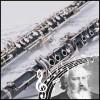| Voice/Instrument: |
Biography
Quartetto Italiano (English: Italian Quartet) was a string quartet founded in 1945. They made their debut in 1945 at Carpi when all four players were still in their early 20's. They were originally named Nuovo Quartetto Italiano before dropping the "Nuovo" tag in 1951. They are particularly noted for their recording of the complete cycle of Beethoven string quartets, made between 1967 and 1975. The quartet disbanded in 1980.
The secretary and historian of the Quartet was Guido Alberto Borciani (1920-2008), brother of Paolo and founder of the Premio Paolo Borciani.
Members
1 violin
- Paolo Borciani (1945-1980) (founder and leader)
2 violin
- Elisa Pegreffi (1945-1980)
viola
- Lionello Forzanti (1945-1947)
- Piero Farulli (1947-1977)
- Dino Asciolla (1977-1980)
cello
- Franco Rossi (1945-1980)
Origins and activities
Borciani, Pegreffi and Rossi met in 1940 at the Concorso Nazionale in La Spezia. In summer 1942 they met again at the Accademia Musicale Chigiana in Siena, where the cellist Arturo Bonucci (head of the chamber class, husband of Pina Carmirelli) put them together with the viola player Lionello Forzanti for the study session. They worked together on the Debussyquartet and performed it in September 1942.
In August 1945 the group began to study together again at the Borciani house in Reggio Emilia. Their debut followed on 12 November 1945 at the Sala dei Mori in Carpi, as the 'Nuovo Quartetto Italiano', in the inaugural concert of the Società degli Amici della Musica. By the end of the year they had also performed in Reggio Emilia and in Milan. In March 1946 they were winners at the Concorso of the Accademia Nazionale di Santa Cecilia, and also in the Concorso of the Accademia Filarmonica Romana. A performance for the Milan Quartet Society followed, and the first foreign engagement was at the Zürich Tonhalle.
In February 1947 Piero Farulli replaced Forzati at the viola desk, and the first performance in the new (and permanent) company was at Mantua. Debuts followed that year in Austria,England, at the Venice International Festival, and at the Engadin Konzertwochen (where their collaboration with clarinettist Antoine de Bavier in the Mozart quintet K 581 occurred). They also gave the world premiere of the Villa-Lobos quartet no. 9 at the Accademia Filarmonica Romana.
Appearances in Italy, England, Scotland, Spain and France followed in 1948, totalling 63 concerts, and the group began recording for Decca Records. Concerts rose to over 100 in 1949, with visits to Sweden, Czechoslovakia, Denmark, Norway and Holland. At Stockholm Royal Academy they gave a series of lecture-recitals with Gerda Busoni, widow of Feruccio Busoni. Another century of concerts was given in 1950.
In 1951 (having dropped the word 'Nuovo' (i.e., new) from their name) the Quartet performed at the Edinburgh Festival and at the Salzburg Festival. It was at Salzburg that they had a long and very influential interview with Wilhelm Furtwängler, who urged them to work towards a much greater freedom of expression which would access for them the world of GrandRomanticism. This was much later acknowledged as a critical turning-point for the group.
In November they made their first U.S.A. tour, which was repeated in approximately alternate years until 1977. Virgil Thomson pronounced them 'The finest string quartet, unquestionably, that our century has known.'[4] In 1953, the year in which they transferred their recording programme to Columbia Records, they gave 59 concerts in the U.S.A. and Canada. In that year also, Elisa Pegreffi married Paolo Borciani.
Recordings which followed included (1954) the Darius Milhaud quartet no 12, and (1956) the Debussy quartet , which Robert Kemp described as 'miraculous'. The group was then studying the six Mozart quartets dedicated to Joseph Haydn, and performed them at venues including Milan and Fiesole. Important Festival appearances continued, at Lucerne (1955), theMaggio Musicale Fiorentino (1959), the Prague Spring Festival (1961) and the Berlin Musikwochen.
Through the later 1960s and early 1970s the group toured further afield, to Macedonia (1966), to South America (968), to South Africa and Zambia (1970), and to Poland, the U.S.S.R. andJapan in 1973. Meanwhile their recording projects for Philips Records, begun in 1965, were coming to fruition, with the Mozart integrale finished in 1972 and the Beethoven in 1973.
In this later period their collaboration with Maurizio Pollini took place. The completion of their recording work in Schubert did not occur until 1977. In their late concerts the group focussed especially upon Beethoven and Schubert, often devoting a recital to two works, a single masterpiece by each composer. In December 1977 Piero Farulli was obliged to retire from the group owing to illness, and was replaced by Dino Asciolla. However following a tour to Israel it was decided to bring the Quartet to an end in 1980.
Paolo Borciani devoted his later years to J.S. Bach's The Art of Fugue, working with Pegreffi and two students of Farulli and Rossi. Pegreffi devoted herself to teaching, Farulli found his place in the school of Fiesole, and Rossi returned to the performance of chamber music. All four were awarded the Gold Medal of the Benemeriti della Scuola, della Cultura e dell'Arte by the Presidente della Repubblica.
Compositions
Composers' compositions
Wolfgang Amadeus Mozart
Complete Mozart Edition - [CD 68] - String Quartets 10-13Music for String Orchestra
Wolfgang Amadeus Mozart
Complete Mozart Edition - [CD 67] - String Quartets 6-9Music for String Orchestra
Wolfgang Amadeus Mozart
Complete Mozart Edition - [CD 66] - String Quartets 1-5Music for String Orchestra


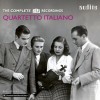
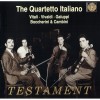
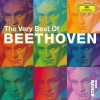
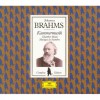
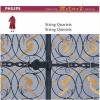
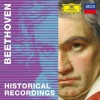
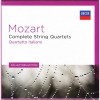
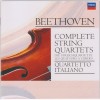
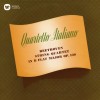
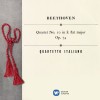
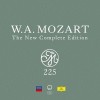
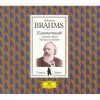
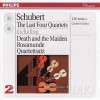
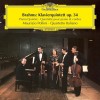
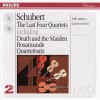
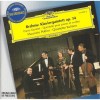
![Complete Mozart Edition - [CD 73] - String Quartets 22 & 23](http://static.classicalm.com/repository/composition-cover/small/11195-img1312889059686287.jpg)
![Complete Mozart Edition - [CD 72] - String Quartets 20 & 21](http://static.classicalm.com/repository/composition-cover/small/11191-img1312885098866884.jpg)
![Complete Mozart Edition - [CD 71] - String Quartets 18 & 19](http://static.classicalm.com/repository/composition-cover/small/11187-img1312883107531252.jpg)
![Complete Mozart Edition - [CD 70] - String Quartets 16 & 17](http://static.classicalm.com/repository/composition-cover/small/11185-img1312881399516039.jpg)
![Complete Mozart Edition - [CD 69] - String Quartets 14 & 15](http://static.classicalm.com/repository/composition-cover/small/11183-img1312879944619077.jpg)
![Complete Mozart Edition - [CD 68] - String Quartets 10-13](http://static.classicalm.com/repository/composition-cover/small/11177-img1312820080645110.jpg)
![Complete Mozart Edition - [CD 67] - String Quartets 6-9](http://static.classicalm.com/repository/composition-cover/small/11175-img1312818201191789.jpg)
![Complete Mozart Edition - [CD 66] - String Quartets 1-5](http://static.classicalm.com/repository/composition-cover/small/11173-img1312815387637027.jpg)
